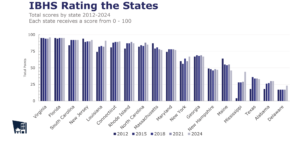The U.S. Senate on Monday inched closer to passage of a bill to fund federal agencies through Sept. 30 and avoid a government shutdown at the end of this month when existing money runs out.
Up against a March 27 deadline, senators voted 63-35 to limit debate on the legislation so that it can be approved and sent to the House of Representatives for final approval this week.
A Senate vote on passage could come as early as Tuesday.
Just before the procedural vote, Senate Majority Leader Harry Reid, frustrated by the slow pace, urged his colleagues to let the legislation move ahead.
“There is a big spotlight on the United States Senate to see if we can do something,” Reid said, adding, “I’m asking senators here to give up a few things for the greater good.” He was referring to the 125 or so time-consuming amendments that senators had circulated, which were slowing passage of the legislation.
Notably, the bill retains $85 billion in controversial spending cuts that began on March 1. This is the first big installment on a 10-year, $1.2 trillion deficit-reduction plan that has virtually every U.S. agency worried, from the Defense Department to the Education Department and NASA.
As originally passed by the House, this short-term spending bill would give the Pentagon some flexibility in how it carries out its half of the $85 billion in spending cuts.
Senate Democrats are trying to expand that flexibility to some non-defense government agencies.
With the Senate and House scheduled to begin a two-week spring break on Friday, the March 27 deadline effectively was moved up to the end of this week.
The $85 billion in spending cuts were supposed to be applied evenly throughout the government and were intended to be so universally painful to Republicans and Democrats that they would find an alternative.
That has not yet happened, and so lawmakers were resigned to the $85 billion in cuts staying in place. But at the same time were using the short-term funding bill to try to protect programs particularly important to their home states.
Even fiscal conservatives, who have made deep government spending cuts their top priority, had been looking for ways to negate some of the spending cuts.
For example, Republican Senator Pat Toomey tried to shield from layoffs hundreds of civilian contractors working at a huge Defense Department maintenance facility in his home state of Pennsylvania.
Meanwhile, Senator John Boozman joined up with Senator Mark Pryor, both of Arkansas, and other senators to stop the Federal Aviation Administration from closing air traffic control towers in rural states. Four such towers in Arkansas could be shuttered by the spending cuts known as “sequestration.”
Democratic Senator Chris Coons of Delaware, home to a large poultry industry, was part of an effort to stop the spending cuts from furloughing government food inspectors who are needed to keep slaughterhouses and other food facilities operating.
It was not clear which, if any, of these amendments ultimately could be incorporated into the bill.
As Congress attempted to work cooperatively to pass the short-term spending bill and avert a government shutdown, there was no such bipartisanship on U.S. budget priorities for fiscal 2014, starting on Oct. 1, and beyond.
Republicans were stressing the need to balance the U.S. budget in 10 years, while Democrats were calling for less ambitious deficit-reduction and more emphasis on creating jobs in a slow-growing economy.
The Republican-controlled House this week was set to pass a budget aimed at erasing deficits by 2023 through deep cuts to social programs such as Medicaid healthcare for the poor. The fiscal blueprint, crafted by House Budget Committee Chairman Paul Ryan, also would restructure Medicare healthcare for the elderly and disabled.
A large group of conservative Republicans on Monday unveiled their budget vision: growth in defense spending at the same pace as the Ryan budget, but deeper cuts to other domestic programs by freezing them at levels spent in 2008 for the next four years.
This alternative is not expected to pass the House. Neither is a House Democratic alternative, which aims to cancel the $1.2 trillion in automatic spending cuts and replace them with more targeted savings, while also spending $200 billion for job creation.
Also this week, the Democratic-controlled Senate is expected to debate and pass its fiscal 2014 budget blueprint, claiming $1.85 trillion in deficit-reduction over a decade through an equal mix of spending cuts and tax increases.
A compromise budget plan, if one is possible this year, might be a few months away as President Barack Obama and Republicans in Congress could joust through July over spending cuts and tax increases. By late July or early August, Congress must confront the need to raise U.S. borrowing authority or risk a first-ever government default. The budget talks are likely to become intertwined with the debt limit debate.




















 Study: Average Cyber Breach Insurance Coverage Gap is 350%
Study: Average Cyber Breach Insurance Coverage Gap is 350%  Study: U.S. Companies Facing Class Actions at Highest Level in 13 Years
Study: U.S. Companies Facing Class Actions at Highest Level in 13 Years  Time-Tested Loss Reserving Methods Challenged: AM Best
Time-Tested Loss Reserving Methods Challenged: AM Best  What Industry Executives Are Saying About Loss Reserves, Social Inflation
What Industry Executives Are Saying About Loss Reserves, Social Inflation 